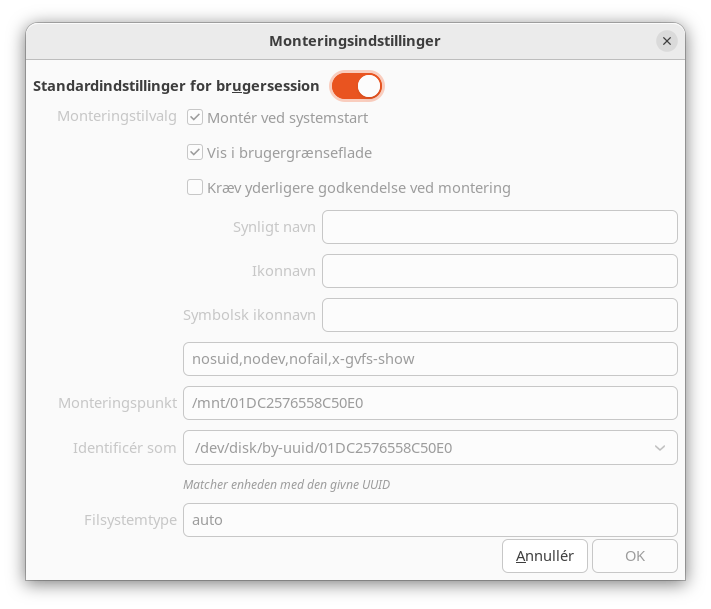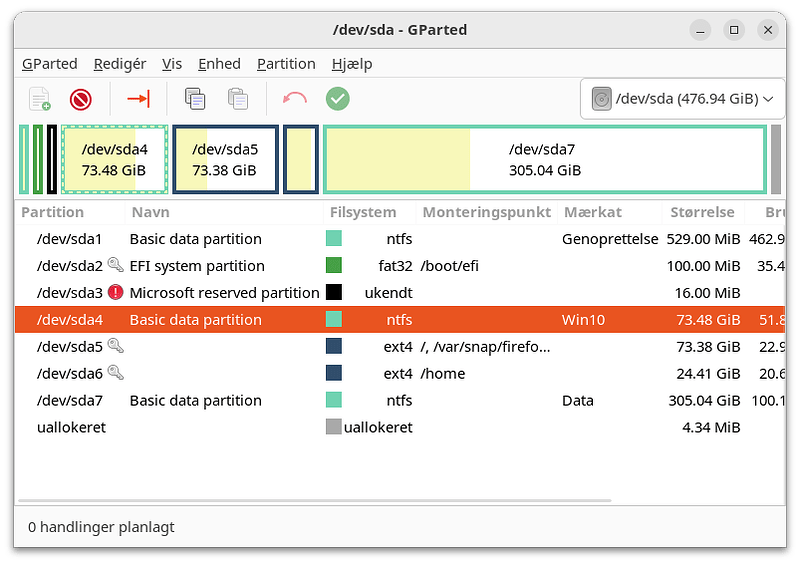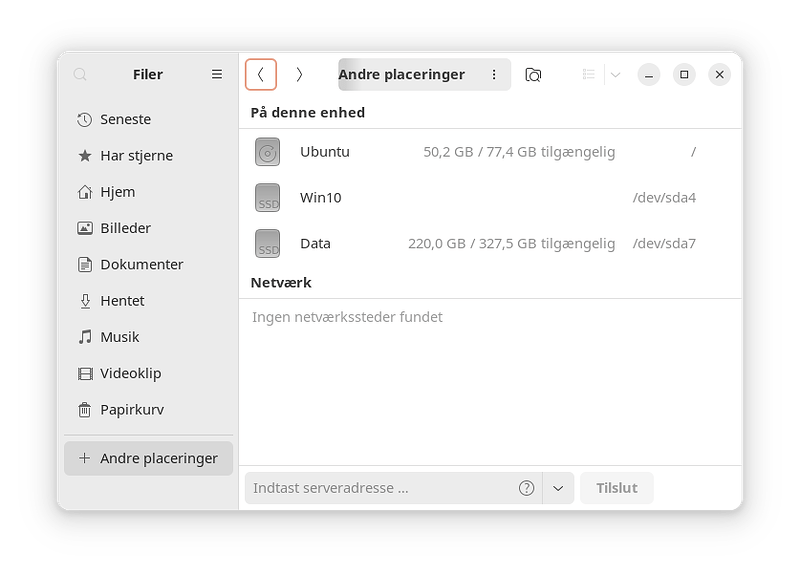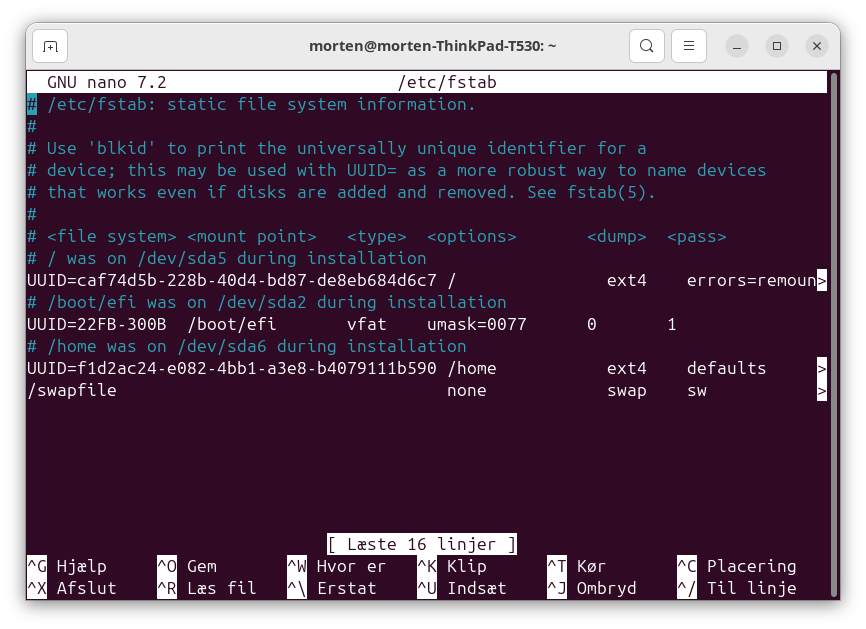I have a data partition that is used both when I am using Ubuntu 24.04.3 LTS and when I am using Win10.
It looks like this in Disk:

The partitions looks like this from Win10:
and like this from Ubuntu:
It made WAS mapped in the fstab like this:
UUID=01D6A894741E3050 /mnt/datadisk ntfs errors=remount-ro 0 1
which made booting very slow and unreliable until tea-for-one kindly diagnosed the problem and told me to rem it out like this:
UUID=01D6A894741E3050 /mnt/datadisk ntfs errors=remount-ro 0 1
That solved my boot problem.
I found my data partition under Disks where it looks like this:

and it seems OK to use:
But another user (oldfred) seems to think that Disks is not the right way to handle my data partion. What is the opinion of the majority and what problems would it result in to leave it as it is?
My FSTAB looks like this now:
oldfred:
"Not a fan of Disks as it uses a default set of parameters. For NTFS those should be changed & then not all that difficult to manually edit fstab with UUID & correct set of parameters.
From old forum post and user Morbius1 Should be one line shown below on two due to space.
Create mount point, mount & edit fstab from user Morbius1 - suggest using templates instead.
Good example of manually mounting,
For ntfs UUID shown is example only see below:
sudo mkdir /media/WinD
sudoedit /etc/fstab
UUID=XXXXXXXXXXX /media/WinD ntfs defaults,nls=utf8,umask=000,uid=1000,gid=1000,windows_names 0 0
Window_names prevents the use of invalid windows characters:
(which are the nine characters ” * / : < > ? \ | and those whose code is less than 0×20)
uid=1000 should fix the trash problems as well:
Also seen these as suggested parameters:
nodev,windows_names,nosuid,noatime,async,big_writes,timeout=2,uid=1000,gid=1000,fmask=0113,dmask=0022"



